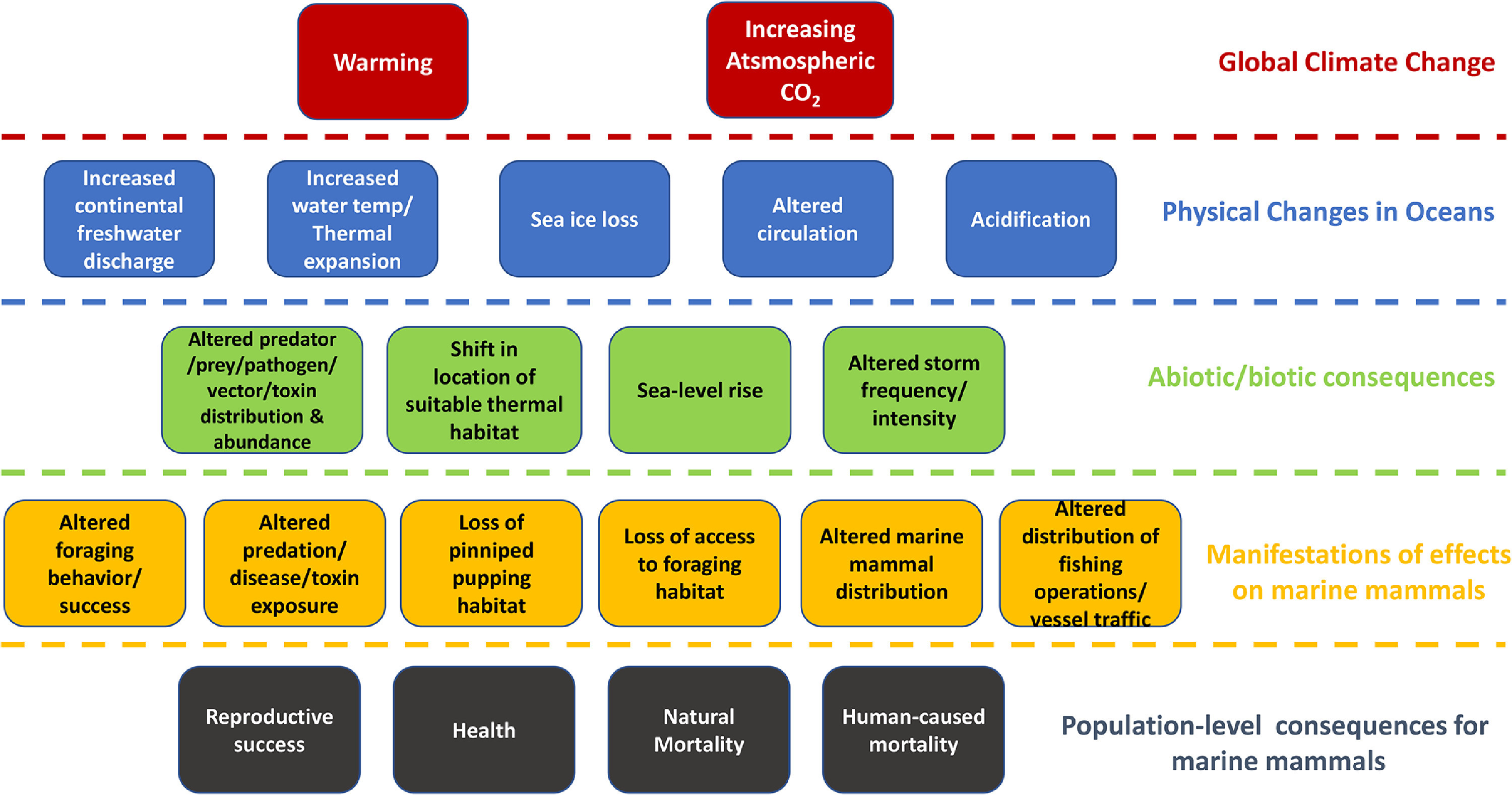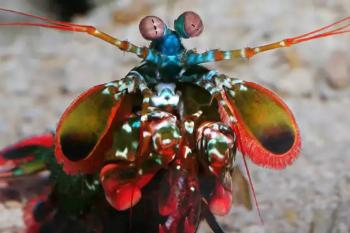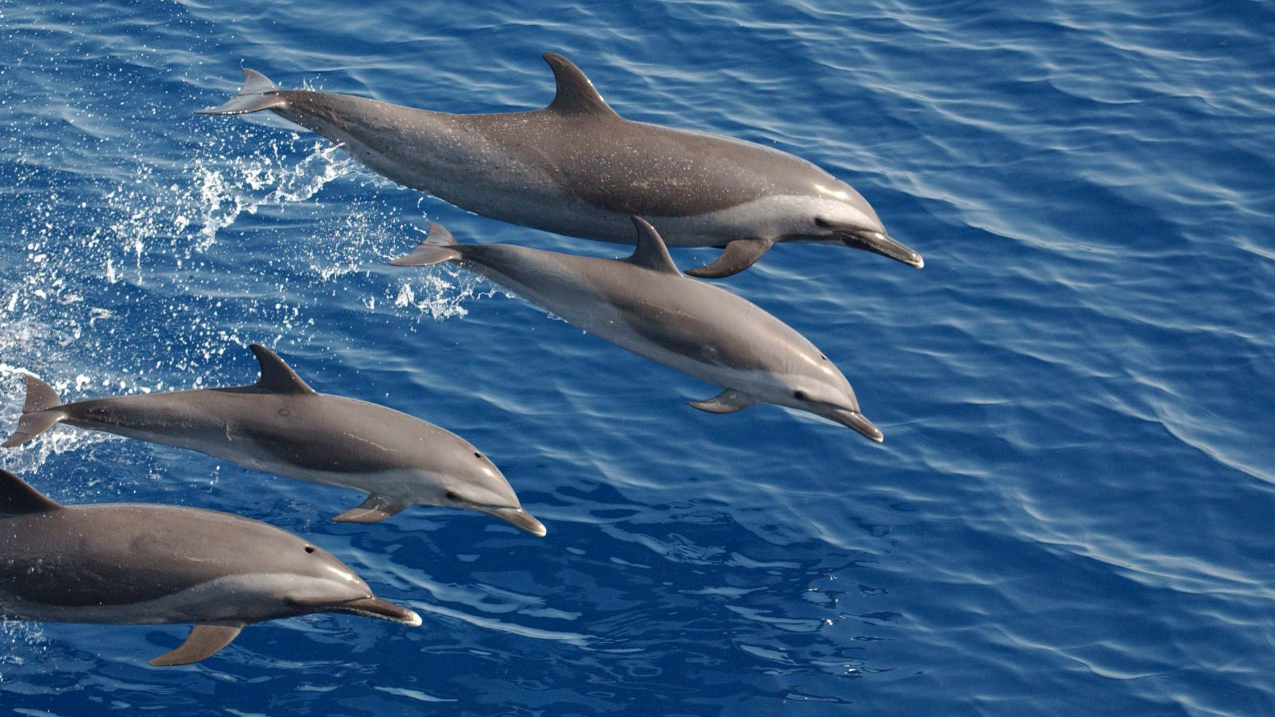
While climate change threatens all life in the ocean, our love for the “charismatic megafauna”, large marine mammals seem to be top of mind for most people. Marine mammals fulfill key and irreplaceable ecological roles in the ocean. Their decline may have irreversible consequences for ocean ecosystems.
In 2023 National Oceanic and Atmospheric Administration (NOAA ) researchers ”examined more than 100 stocks of American marine mammal species and found more than 70 percent of those stocks are vulnerable to threats, such as loss of habitat and food, due to the consequences of warming waters. The impacts also include loss of dissolved oxygen and changes to ocean chemistry.”
The study focused on marine mammals living in the western North Atlantic ocean, Gulf of Mexico and Caribbean Sea areas where the animals are managed by the National Marine Fisheries Service.
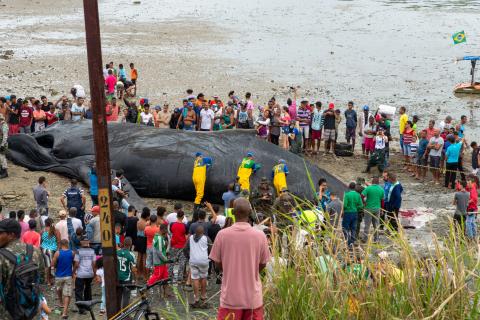
Humpbacks and North Atlantic right whales were among the most vulnerable to the impacts of climate change; toothed whales and dolphins were also at high risk the scientists found. The NOAA study concluded that the warming ocean primarily harms marine mammals by changing their ability to find food and reduces their amount of suitable habitat. But also that changing ocean chemistry together with rising ocean temperature can change sound transmission that marine mammals, such as dolphins, use to communicate and hunt.
Super Rapid Loss of Arctic Ice
Climate change has been affecting the Arctic for a long time: the Arctic is warming three times as fast as the global average. Arctic ice has been shrinking for several decades.The species that are most sensitive to climate change are those that are dependent on sea ice. Because of the shrinking sea ice that polar bears depend on for hunting seals, they were some of the first animals the public saw as the face of climate change.
“Marine mammals endemic to the Arctic are uniquely adapted to life in icy waters. These include bowhead whales, polar bears, several species of “ice seals,” beluga whales, and walruses. Polar bears and other marine species (e.g., Arctic seabirds) rely on the year round or seasonal presence of sea ice.” Other species, like humpback, fin, and gray whales, migrate to the Arctic from more temperate regions to feed during the summer months. These species follow the receding sea ice edge and take advantage of the region’s immense summer food supply.
A global study concluded that “the North Pacific Ocean, Greenland Sea and Barents Sea hosted the marine mammals that were most vulnerable to global warming. These regions might face the strongest effects from global warming.” Some places in the north have already “undergone temperature increases two–three times higher than the changes to the global mean surface temperature over the past 150 years.
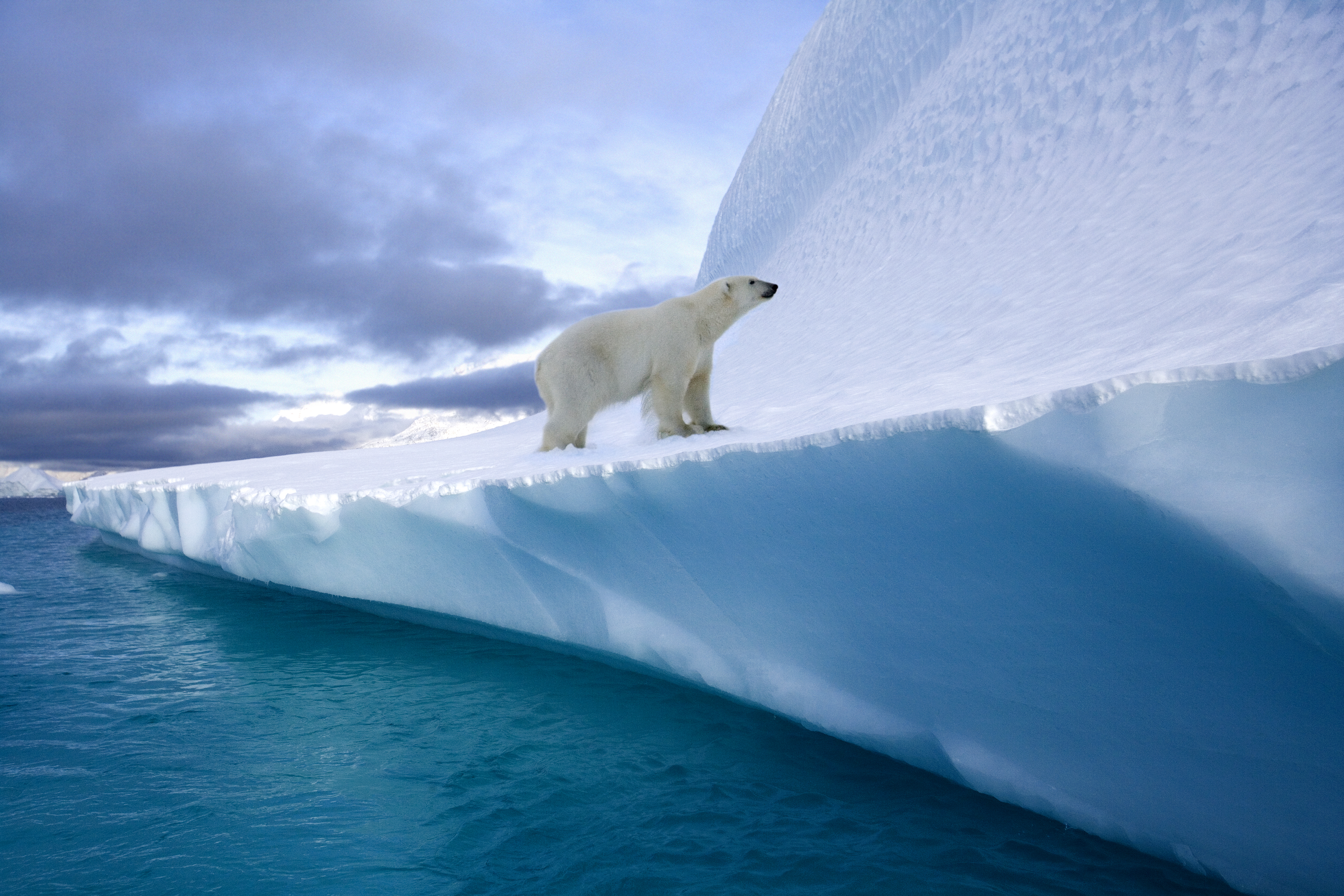
Migratory Disruption
Climate change could be particularly critical for migratory species that travel long distances between feeding areas in the Arctic and breeding areas in warm regions – like gray whales. Recent die-offs of these whales are due to swings in their food supply, mainly amphipods, in a changing Arctic. The amphipods depend on algae on the sea ice, which is shrinking due to warmer ocean water. With less of their preferred food, grey whales don’t have the energy to make their long migration to Baja and back.
A US government agency, the Marine Mammal Commission(MMC), was created to protect marine mammals that were in decline and to conduct research to understand how to reverse those declines. The MMC looked at climate change impacts on marine mammals in a 2022 study. Both warming ocean temperatures and acidification are impacting marine mammals as the chart below indicates.
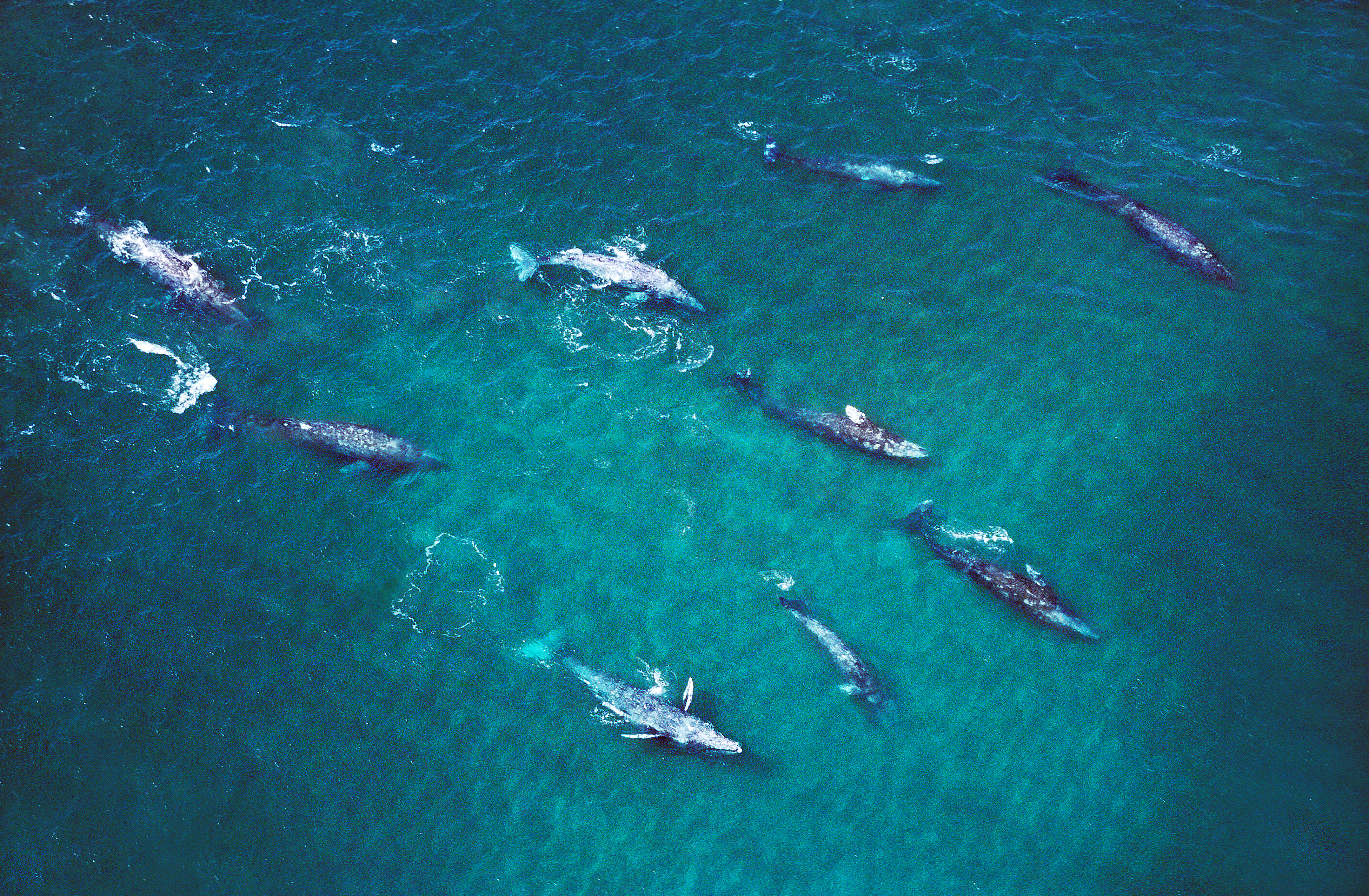
Ability to Persist in Natural Habitat
In another study looking at the potential impacts of climate change on marine mammals globally, the authors created a sensitivity to ocean warming index, “defined as the inability of the species to persist in its habitat.” The chart above is part of that study. Ecosystems are influenced by both biotic and abiotic factors. Biotic factors include other organisms – animals, plants, bacteria, and fungi. Abiotic include: sunlight, water, temperature, soil, atmosphere, and geology.
The study found that one of the most common responses to ocean warming was for the marine mammals to shift their ranges. Another documented response is a decline in reproductive success. For example, scientists found that female sperm whales have lower conception rates after long exposure to higher than usual sea surface temperatures.
Scientists also found that the warming ocean could negatively impact mid-latitude marine mammals like humpback and right whales, as rising sea temperatures can modify the phytoplankton blooms and thereby disrupt the whole food chain. The marine mammals in this region face double jeopardy from both human activities (e.g., marine traffic, pollution and offshore oil and gas development) and global warming. It’s unclear how these effects will interact; it’s possible that the ecosystems face irreversible consequences for marine ecosystem survival.
Conservation
How the U.S. and other countries manage whales, dolphins, seals, walrus, and polar bears needs to adapt in the era of climate change. Protecting the animals from other harmful human activities will help give the animals a chance to survive. Conservation plans need to be based on scientific research to better protect species: watch this video.
